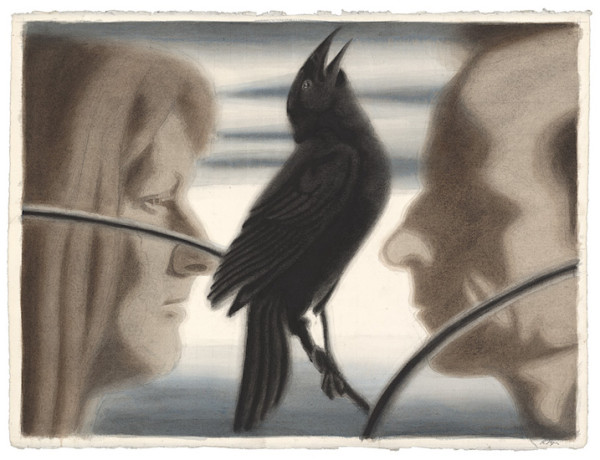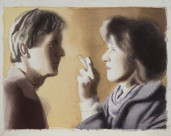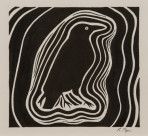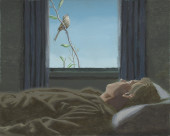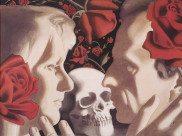Robert’s conversation theme, (two figures face one another; between them are symbols of their interests and concerns), combines here with his talking animal theme (a bird or animal gives utterance to emotions felt by the figures, emotions that cannot be expressed in words). The arch-shaped branch the bird perches on serves as a bridge linking the two figures. Robert suggests a yin and yang relationship between the figures, opposite yet complementary, by making them male and female and by having one face brightly lit and the other face shadowed.
The two facing profiles suggest a Rubin’s vase, a reversible picture that, viewed one way, looks like two heads and, viewed another way, looks like a vase. The image was devised by Danish psychologist Edgar Rubin in 1915 to show how the brain chooses a figure and ground relationship that, once fixed, is hard to reverse. Artists Marcel Duchamp and Jasper Johns refer to the Rubin’s vase in their work to suggest that all images have multiple, equally valid, interpretations. Robert admired Duchamp and Johns, but refers to Rubin’s vase in a slightly disguised fashion. In this case, by placing the bird and branch in front of it.
